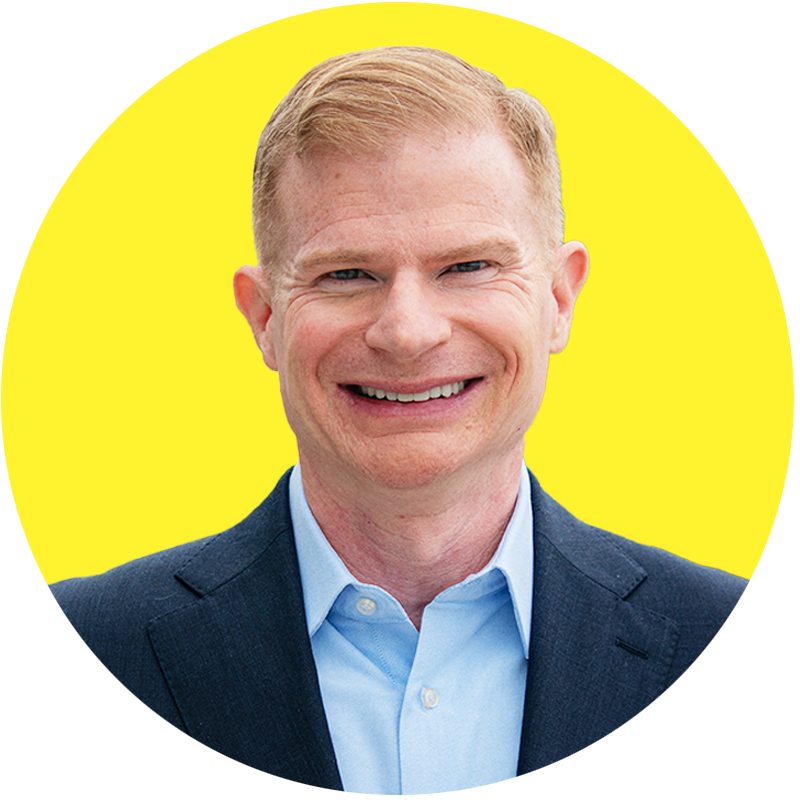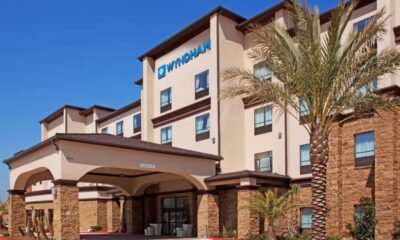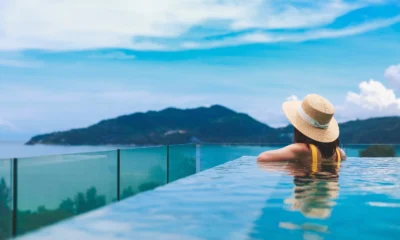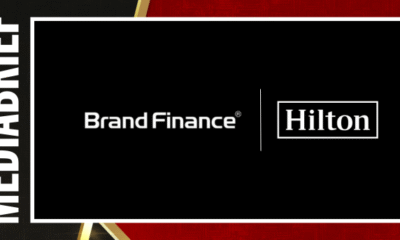Brand Stories
Every One of Hyatt’s Brands, Explained (2025)

Hyatt Hotels Corporation is a leading operator of hotels and all-inclusive resorts. The business was founded in 1957 by the Pritzker family and is led by president and CEO Mark Hoplamazian.
As of March 2025, Hyatt’s portfolio included more than 1,450 hotels and all-inclusive properties in 79 countries across six continents. At the end of 2024, the company had a record pipeline of around 138,000 rooms.
That momentum carried into 2025. In January, Hyatt reorganized its brands into five collections — Luxury, Lifestyle, Inclusive, Classics, and Essentials — to clarify the company’s pitch to both travelers and owners.
That reorganization set the stage for a busy first half of the year. In February, Hyatt launched Hyatt Select, a new upper-midscale brand focused on short-stay, transient guests. In May, it introduced Unscripted by Hyatt, a soft brand designed to convert independent upscale hotels into the system, with about 40 hotels globally in talks to join the new brand.
In June, Hyatt also closed its $2.6 billion acquisition of Playa Hotels & Resorts, an owner, operator, and developer of all-inclusive resorts in Mexico, the Dominican Republic, and Jamaica. This included the acquisition of 15 all-inclusive resorts previously managed and owned by Playa. Of these, eight were already represented within Hyatt’s system as Hyatt Ziva and Hyatt Zilara properties.
These moves highlight Hyatt’s strategy for 2025 and beyond, clarify its brand architecture, and accelerate growth.
Here’s how each of Hyatt’s brands fits into that plan.
Note: Global footprint numbers reflect room numbers as of March 31, 2025.
Luxury
Park Hyatt
Global footprint: 48 hotels; 8,932 rooms
Hyatt Take: “Located in several of the world’s premier destinations, each Park Hyatt hotel is custom-designed to combine sophistication with understated luxury. Each property features well-appointed guestrooms, world-renowned artwork and design, and unique and immersive culinary experiences led by award-winning chefs, creating deeply enriching dining occasions for guests.”
Skift Take: Park Hyatt is a luxury brand in the world’s most important cities. While it was only founded in 1980, it’s gaining in prestige on older rivals like Ritz-Carlton, St. Regis, and Four Seasons. Its most famous star turn was when its Tokyo property was showcased in the 2003 movie Lost in Translation.
Alila
Global footprint: 17 hotels; 1,970 rooms
Hyatt Take: “The Alila brand redefines luxury with its experience-driven philosophy that blends transformative moments, innovative design, and personalized service. […] Recognized for award-winning practices, Alila hotels protect and celebrate the natural, cultural, and architectural heritage of their destinations, which leads to unmatched guest experiences.”
Skift Take: Alila’s eco-luxury appeal is intimate, design-led, and credibly sustainable. With new properties in the pipeline across Asia and the Pacific, the brand intends to show that Hyatt can do boutique-style sustainability.
Miraval
Global footprint: 3 hotels; 383 rooms
Hyatt Take: “The Miraval brand is a global leader in wellness resorts and spas. […] The Miraval brand’s commitment to inspire guests to create a life in balance, foster positivity, and cultivate mindfulness is the cornerstone of a distinct wellness offering within our portfolio of brands. This commitment reflects our focus on serving the high-end traveler by finding new ways to understand and care for them beyond the traditional hotel stay.”
Skift Take: Still coasting on early acclaim, Miraval hasn’t expanded like a wellness heavyweight should. Three properties in nearly a decade suggest Hyatt loves the brand more than it knows what to do with it.
Impression by Secrets
Global footprint: 2 hotels; 323 rooms
Hyatt Take: “The Impression by Secrets brand is a boutique, adult-only, luxury all-inclusive brand where guests can experience personalized restoration and luxury, offering escapes designed to exceed expectations of guests. […] Guests will enjoy a high-touch, preference-focused experience complete with the utmost level of personalized service and amenities.
Skift Take: With a tagline like “Endless Privileges”, Hyatt is leaving little to the imagination with this one. As most of the major players push into all-inclusive waters, Hyatt’s ultra-luxe spin-off from Secrets plays to the champagne-on-arrival crowd. Think personal butlers and maid service three times a day. So far, there are only two properties, but expect more announcements soon.
The Unbound Collection by Hyatt
Global footprint: 50 hotels; 8,493 rooms
Hyatt Take: “More than a compilation of independent, one-of-a-kind luxury hotels, The Unbound Collection by Hyatt brand is a thoughtful curation of stories worth collecting. Whether it is a modern marvel, a historic gem, or a revitalizing retreat, each property provides thought-provoking environments and experiences that inspire unforgettable moments for guests seeking a sophisticated yet unscripted service when they travel.”
Skift Take: Hyatt’s version of Autograph by Marriott or Curio by Hilton, the Unbound Collection, is a luxury and upper upscale full-service soft brand. Hotels have a measure of independence with full access to the Hyatt distribution network and resources. It’s become a smart home for standout independents that need global distribution.
Lifestyle
Andaz
Global footprint: 30 hotels; 7,438 rooms
Hyatt Take: “Andaz, translated from Hindi, means ‘personal style.’ Designed for those with a global sensibility, Andaz hotels are grounded in their local surroundings and infused with local culture. The brand’s personalized, attentive service leaves guests feeling empowered and energized to explore themselves and the world around them, leaving enriched and energized.”
Skift Take: Andaz, Hyatt’s luxury lifestyle brand, aspires to sophisticated style and vibrant social areas that immerse guests in local culture. After early stumbles, the brand appears to be finding its footing under the eye of brand leader Crystal Vinisse Thomas and the tag line “Be Like No One’s Watching.” Think one-off events like DJ masterclasses and trips to local pottery-making classes.
Thompson Hotels
Global footprint: 19 hotels; 3,991 rooms
Hyatt Take: “Thompson Hotels provide a sophisticated home base when traveling. The brand is focused on the classics done with a refined sensibility and a distinctive sense of style. All housed where culture thrives. Thompson Hotels cater to discerning visitors traveling for business, leisure, and special events, along with socially connected locals in each market.”
Skift Take: Thompson Hotels is a luxury collection acquired by Hyatt in 2018. The brand made its European debut in Madrid in 2022. Thompson is one of Hyatt’s sharpest lifestyle assets — urban, stylish, and expanding abroad. It walks a fine line between boutique personality and chain hotel polish, and largely gets the balance right.
The Standard
Global footprint: 9 hotels; 1,522 rooms
Hyatt Take: “The Standard hotels create culturally-inspired, socially-driven entertainment destinations in some of the world’s most inspiring destinations. From its carefully curated food and beverage offerings to vibrant events that engage both locals and travelers, over the past 25 years, The Standard brand has become one of the most celebrated brands in the industry.”
Skift Take: Once the poster child for downtown cool, The Standard joins Hyatt with cultural cachet but real operational questions as it tries to scale globally at a quick pace. If it can retain its rebellious DNA, it could bring new energy to Hyatt’s lifestyle ambitions. But it can’t be too rebellious. It’d better avoid news headlines about drug-fuelled parties, please, now that Hyatt’s in charge.
Dream Hotels
Global footprint: 5 hotels; 986 rooms
Hyatt Take: “Dream Hotels bring the party to its guests with eye-catching aesthetics and vibrant social spaces where guests and locals mingle in search of a good time. Dream Hotels are located in urban destinations and emerging neighborhoods surrounding city centers. Each location’s distinct influence creates a lively and amplified hospitality experience.”
Skift Take: Dream Hotels is a lifestyle brand known for its eye-catching design and vibrant nightlife, targeting travelers seeking energetic social scenes and immersive experiences. The acquisition of Dream Hotels has strengthened Hyatt’s presence in the lifestyle segment and boosted its footprint in key markets like Hollywood, Nashville, and South Beach in Miami.
The StandardX
Global footprint: 2 hotels; 187 rooms
Hyatt Take: “The StandardX brand brings The Standard brand’s signature ‘cool factor’ to smaller hotels, and up-and-coming neighborhoods, with properties that pack style, culture, and attitude into a smaller footprint. Each The StandardX hotel embodies a stripped-back, potent sense of style, often located in areas on the cusp of transformation, where X marks the spot for the next big thing.”
Skift Take: The StandardX, under Hyatt’s umbrella via Standard International, is a lifestyle hotel brand inspired by the edgy, experimental spirit of the original Standard Hollywood. A lower-cost remix of The Standard concept, StandardX banks on attitude over amenities. It’s vibey and youth-focused, and has just enough differentiation to avoid lifestyle sameness.
Breathless
Global footprint: 6 hotels; 2,311 rooms
Hyatt Take: “Breathless Resorts & Spas are adult-only, all-inclusive properties for guests seeking an activated beachfront experience in a social setting. These resorts offer modern accommodations, spas, meetings and event spaces, and compelling dining and drink options.”
Skift Take: All-inclusive, adults-only, and proudly built for poolside DJs, Breathless aims to be unapologetically bold. It’s not trying to do wellness or quiet luxury, it knows its audience and leans all the way in. Loud, lively, and effective with the millennial and bachelor/bachelorette crowd. It may face some marketing pressure from Sandals, though.
JdV by Hyatt
Global footprint: 54 hotels; 7,886 rooms
Hyatt Take: “The JdV by Hyatt brand offers a collection of vibrant, independent hotels that are true reflections of the urban neighborhoods they call home. Each hotel provides an experience that is inclusive in spirit and space, that brings people together with joy-driven service. Embracing its namesake of “joie de vivre,” each property invites guests and locals to connect and celebrate the joys of life and travel.”
Skift Take: JdV is a boutique-minded soft brand that Hyatt acquired when it bought Joie de Vivre (via parent company Two Roads Hospitality) in 2018. Founded by hotel impresario Chip Conley, JdV is mostly an American brand. It’s rarely headline-making, but it’s quietly grown into one of the group’s more flexible tools.
Bunkhouse Hotels
Global footprint: 11 hotels; 598 rooms
Hyatt Take: “With a passion for distinctive design and a focus on building relationships with locals, Bunkhouse properties offer soulful travel experiences that connect deeply with guests. The brand’s commitment to community-centered food and beverage experiences and engaging events creates spaces where locals and visitors alike come together to share stories and make memories.”
Skift Take: Bunkhouse brings genuine indie credibility. With Hyatt’s backing and a light-touch approach, it might just prove that big brands can support, not swallow, small ones. But can Hyatt do premium economy lodging at scale? Does this fit with its loyalty program?
Me and All Hotels
Global footprint: 7 hotels; 1,137 rooms
Hyatt Take: “Me and All hotels are centrally located and inextricably linked with their city’s local social dynamics. Urban design meets fun cultural programming to create an engaging environment for travelers and locals.”
Skift Take: A Eurocentric lifestyle brand, Hyatt scooped up for its design and location play in a 2024 deal. The hotels blend contemporary design with neighbourhood roots, appealing to urban travelers. It’s niche for now, but with the right positioning, it could punch above its weight in urban Europe.
Inclusive Resorts
Zoëtry Wellness & Spa Resorts
Global footprint: 7 hotels; 542 rooms
Hyatt Take: “Zoëtry Wellness & Spa Resorts cater to those seeking luxury, privacy, and pampering in an all-inclusive, beachfront boutique setting. These resorts offer lavish accommodations, 24-hour concierge, gourmet cuisine, top-shelf spirits, and enrichment experiences.”
Skift Take: Zoetry is a high-end all-inclusive wellness collection, which adds calm to Hyatt’s all-inclusive lineup. Small but serene, it holds appeal for travelers looking to disconnect without sacrificing service.
Hyatt Ziva
Global footprint: 6 hotels; 2,672 rooms
Hyatt Take: “Hyatt Ziva all-inclusive resorts are designed for guests of all ages in premier leisure locations. […] In addition to leisure travelers, these resorts cater to special events and business groups with varied and well-appointed indoor and outdoor meeting and event facilities.”
Skift Take: At destinations across Mexico and the Caribbean, Ziva does family-friendly all-inclusives well, and that’s its whole pitch. It’s not revolutionary, but that’s what keeps the bookings coming.
Hyatt Zilara
Global footprint: 4 hotels; 1,210 rooms
Hyatt Take: “Hyatt Zilara adult-only, all-inclusive resorts are located in sought-after resort destinations. These resorts offer a wide array of food and beverage services focusing on authentic local and global cuisines. The resorts offer premier spas, social activities, and live entertainment, as well as a variety of meeting and event spaces. The resorts are designed so couples or small groups can enjoy intimate, sophisticated surroundings.”
Skift Take: The grown-up twin to Ziva, Zilara offers a quieter, couple-centric version of all-inclusive. With wellness programming and premium dining, it remains one of Hyatt’s safest bets in the resort space.
Secrets Resorts & Spas
Global footprint: 26 hotels; 9,719 rooms
Hyatt Take: “Secrets Resorts & Spas offer adult-only, all-inclusive luxury focusing on romance in beachfront settings. Properties feature elegantly appointed rooms and suites, 24-hour concierge and room services, gourmet restaurants and lounges, and various day and evening activities. In addition to couples and honeymooners, the resorts also cater to business groups and large leisure events with expansive and flexible settings and customized services.”
Skift Take: An all-inclusive luxury brand aimed at couples, Secrets Resorts & Spas are located in Mexico, the Dominican Republic, Jamaica, Costa Rica, Aruba, and Spain. Its formula of adults-only romance in postcard settings still clicks, and the brand’s global reach continues to grow steadily.
Dreams Resorts & Spas
Global footprint: 32 hotels; 13,729 rooms
Hyatt Take: “Dreams Resorts & Spas are family-friendly, all-inclusive resorts located in a selection of beautiful beach destinations. […] Meeting venues cater to business travelers, while private event spaces are perfect for social gatherings and wedding celebrations.”
Skift Take: Dreams offers family-focused all-inclusives with just enough luxury to justify the rate. It’s broad, consistent, and still one of Hyatt’s best volume plays in the leisure segment. Properties are primarily located in Mexico, the Caribbean, and Central and South America, with some locations in Europe.
Hyatt Vivid Hotels & Resorts
Global footprint: 1 hotel; 400 rooms
Hyatt Take: “Hyatt Vivid Hotels & Resorts are designed for the next generation traveler seeking engaging, adult-only, all-inclusive vacation experiences in a unique and down-to-earth atmosphere. The brand will offer crafted culinary experiences, wellness, and nutrition classes, as well as engaging activities and entertainment in a relaxed, casual setting.”
Skift Take: Vivid is Hyatt’s try at Gen Z all-inclusives: casual, wellness-tinged, and full of buzzwords. One resort in, it’s too early to judge, but Hyatt clearly sees white space in the new-age leisure traveler.
Sunscape Resorts & Spas
Global footprint: 8 hotels; 3,689 rooms
Hyatt Take: “Sunscape Resorts & Spas offer budget-conscious vacations focused on family fun. These all-inclusive, family-friendly beachfront resorts in Mexico and the Caribbean provide a fun and energetic, yet relaxing setting. Each location offers a supervised kids club and teen zone for younger guests, along with an array of activities for the entire family.”
Skift Take: An all-inclusive luxury collection aimed at families. The brand was acquired as part of the ALG deal in 2021. It delivers dependable value, and for guests who care more about access to the beach than fine dining, it works.
Alua
Global footprint: 34 hotels; 8,935 rooms
Hyatt Take: “Alua Hotels & Resorts are designed for all types of travelers seeking an affordable, seaside getaway across Europe’s top island destinations, including Spain’s Mediterranean coast, the Canary Islands, the Balearic Islands, and more. Guests can enjoy modern amenities, minimalistic-chic rooms, natural spaces, and worldly cuisine surrounded by local culture and enriching activities.”
Skift Take: Alua was built for Eurobeach efficiency. Think stylish sun holidays on a mid-scale budget. It’s quiet, but it works and provides Hyatt a solid foothold in Europe’s resort game.
Classics
Grand Hyatt
Global footprint: 67 hotels; 34,733 rooms
Hyatt Take: “Grand Hyatt hotels are distinctive hotels in major gateway cities and resort destinations. With a presence around the world and critical mass in Asia, Grand Hyatt hotels provide sophisticated leisure and business travelers with elegant accommodations, extraordinary restaurants and bars, luxury spas and fitness centers, and comprehensive business and meeting facilities. Signature elements of Grand Hyatt hotels include iconic architecture and design, state-of-the-art technology, and facilities for an array of business or social gatherings of all sizes.”
Skift Take: Hyatt’s answer to InterContinental, Fairmont, JW Marriott, and Conrad’s luxury offerings, Grand Hyatt is a brand with a global presence. The brand for big lobbies and even bigger conferences, Grand Hyatt isn’t trying to be cool. It’s trying to be everywhere with scale and gold-flaked imposingness, and mostly succeeds.
Hyatt Regency
Global footprint: 240 hotels; 97,787 rooms
Hyatt Take: “Hyatt Regency hotels offer a full range of services, amenities, and facilities tailored to serve the needs of meeting and event planners, business travelers, and leisure guests. Hyatt Regency hotels in key urban markets around the world feature flexible meeting facilities of all sizes designed to provide a productive, connected environment. Hyatt Regency hotels in resort locations cater to couples seeking a getaway, families enjoying a vacation together, and corporate groups hosting meetings and events.”
Skift Take: See you there at the next company holiday party. Hyatt Regency is one of Hyatt’s most far-reaching brands. Still, Hyatt’s most functional brand and the meetings and conventions stalwart. Dependable and widespread, but arguably the least emotionally resonant brand in the portfolio.
Destination by Hyatt
Global footprint: 20 hotels; 6,444 rooms
Hyatt Take: “The Destination by Hyatt brand is a portfolio of luxury hotels and resorts that are individual, yet connected by a commitment to draw on the spirit of each location. […] The portfolio features renowned golf courses, indigenous spas, and exceptional food and beverage options including bars, restaurants, cafés, and rooftop venues.”
Skift Take: Destination by Hyatt was created in 2018 as a response to the growing demand for lifestyle and boutique hotels. It’s Hyatt’s indie resort collection. Soft-branded but characterful. It doesn’t scream luxury, but its authenticity and range make it an under-the-radar favorite for resort developers.
Hyatt Centric
Global footprint: 70 hotels; 14,186 rooms
Hyatt Take: “Hyatt Centric is a brand of full-service lifestyle hotels located in prime destinations. […] With streamlined, modern rooms, each hotel serves as a launch pad for exploring all the hidden gems and hot spots each destination has to offer. Hyatt Centric hotels offer social spaces to connect with others in the lobby, while the bar and restaurant are local hot spots where great conversations, locally-inspired food, and signature cocktails can be enjoyed.”
Skift Take: Another brand focusing on the lifestyle trend, Hyatt Centric takes a “live like a local” approach. Centric wants to be local and lively, and when done right, it delivers solid lifestyle-lite appeal. A good choice for business travelers who want a hotel with just a bit more flavor.
Hyatt Vacation Club
Global footprint: About 22 properties.
Hyatt Take: “Hyatt Vacation Club is Hyatt’s vacation ownership brand, providing members opportunities in regionally inspired and designed residential-style properties. Hyatt vacation owners pre-purchase at Hyatt Vacation Club properties and have the flexibility of usage, exchange, and rental. Members can choose to occupy their vacation home, exchange time among other Hyatt vacation ownership locations, trade their time for World of Hyatt loyalty program bonus points, or travel within the Hyatt portfolio.”
Skift Take: Hyatt’s timeshare works like any other timeshare, but with an exchange option added in. The vacation owners pre-purchase a place they’d like to stay at a given time of year. Hyatt members can exchange their times with other locations. They can also trade time for points in the World of Hyatt loyalty program, giving the timeshare yet more flexibility. The Hyatt Vacation Club programs are independently owned and operated by HV Global Group. and WHV Resort Group, and there’s always a risk of brand damage if the third parties don’t meet standards..
Hyatt
Global footprint: 14 hotels; 3,536 rooms
Hyatt Take: “Hyatt hotels are smaller-sized properties conveniently located in diverse business and leisure areas.”
Skift Take: Hyatt’s namesake brand is, as you’d expect, in competition with similar namesake brands, such as Marriott and Hilton. It is probably the least defined, mostly mid-market business hotels in India and a few U.S. markets. They’re modern, with great business and meeting facilities, although you wouldn’t just find business types staying here.
Essentials
Caption by Hyatt
Global footprint: 4 hotels; 767 rooms
Hyatt Take: “The Caption by Hyatt brand is designed to be part of the community, not just in it, Caption by Hyatt hotels hire local, buy local, and vibe local. Be it an open-mic night or a pop-up art installation, each space within Caption by Hyatt hotels is programmed to reflect each destination and its community. At the heart of each Caption by Hyatt hotel is Talk Shop, an all-day spot where guests can eat, drink, get some work done, hang with friends, or just relax. Caption by Hyatt combines the design and comfort of an upscale, lifestyle-forward hotel with the flexibility and efficiency of a select service property.”
Skift Take: Caption is Hyatt’s budget lifestyle experiment: part hostel, part coworking café, part brand moodboard. It’s rough around the edges, but it shows real promise for younger, urban travelers. It’s still early days for Caption, but given the growing market for this kind of brand, it’s one to watch.
Hyatt Place
Global footprint: 437 hotels; 64,435 rooms
Hyatt Take: “Hyatt Place hotels offer a modern, comfortable, and seamless experience, combining style and innovation to create a casual hotel environment for today’s multi-tasking traveler. Spacious, thoughtfully designed guestrooms feature distinct areas for sleep, work, and relaxation. Hyatt Place hotels also offer freshly prepared food, efficient service, and an easy-to-navigate experience.”
Skift Take: Hyatt’s take on Hilton Garden Inn or Courtyard by Marriott. Hyatt Place is the Swiss Army knife of select-service. It’s everywhere and predictable. The properties tend to average 140 rooms. Unlike its rivals, its design is remarkably effective at conveying a sense of delivering a lot for your money. Yet staffing and service scores have suffered, on average, at select service properties post-pandemic, and Hyatt needs to outcompete in boosting service, and thus net promoter scores, if it wants to gain market share.
Hyatt House
Global footprint: 140 hotels; 19,741 rooms
Hyatt Take: “Hyatt House hotels are designed to welcome short-term guests and extended-stay residents. Apartment-style suites with fully-equipped kitchens and separate living areas provide guests with living accommodations and the conveniences of home. Hyatt House hotels seek to keep guests comfortable with complimentary hot breakfast, H Bar food and beverage offerings, and indoor and outdoor communal spaces.”
Skift Take: As Hyatt’s upscale extended stay offering, Hyatt House rebranded from Hyatt Summerfield Suites in 2012. It’s functional, not exciting, but in the post-pandemic world of long stays and relocations, that’s enough to keep Hyatt bullish.
Hyatt Studios
Global footprint: 1 hotel; 122 rooms
Hyatt Take: “Hyatt Studios is an upper-midscale, extended-stay brand conceived in direct collaboration with hotel developers and operators and by listening closely to the needs of guests. The Hyatt Studios brand distinguishes itself through efficient design and a lean operating model. Each hotel will deliver spacious studio guest rooms with all the necessities for a convenient and comfortable extended-stay experience, including complimentary grab-and-go breakfast, a state-of-the-art self-service marketplace, laundry and fitness areas, and outdoor patio spaces.”
Skift Take: Launched in 2023, Hyatt Studios is the group’s first upper-midscale extended-stay brand in the Americas. It’s built for developers for underserved U.S. markets, with a lean operating model and flexible design. It is Hyatt’s most aggressive play for budget-conscious, faster growth.
UrCove by Hyatt
Global footprint: 61 hotels; 8,748 rooms
Hyatt Take: “The UrCove brand is designed specifically to meet aspiring travelers’ preferences and growing expectations for a seamless, comfortable, and premium travel experience in the upper-midscale market in Mainland China. Hotels in the UrCove brand, which is short for “your cove,” blend comfort and convenience for the modern traveler through thoughtful service, spacious rooms, delicious food, and a relaxed, yet refined ambiance.”
Skift Take: UrCove was built to serve the growing cohort of China’s business travelers. Designed as an upper-midscale option for China’s “road warriors,” it offers efficiency and comfort at scale. It may not headline World of Hyatt benefits, but it’s a quiet powerhouse anchoring Hyatt in one of the world’s most consequential travel markets.
Hyatt Select
Global footprint: (Not available as of June 2025)
Hyatt Take: “Hyatt Select hotels will focus on offering an efficient, streamlined guest experience without compromising the essentials. The brand expands Hyatt’s ability to care for travelers seeking shorter stays for business or leisure in secondary and tertiary markets where Hyatt has limited hotels to date. The brand also provides a conversion-friendly option for owners looking to leverage Hyatt’s powerful distribution network, commercial engine, and the award-winning World of Hyatt loyalty program.”
Skift Take: Launched in 2025, Hyatt Select is a new upper-midscale brand aimed at short-stay travelers in underserved U.S. and Latin American markets. It’s Hyatt’s most direct entry yet into efficient, value-driven hotels — stripped-down but well-designed and built for fast conversion growth.
Unscripted by Hyatt
Global footprint: (Not available as of June 2025)
Hyatt Take: “Designed for travelers who value the essentials and prefer spontaneity over structure, Unscripted by Hyatt hotels will bring to life a flexible, collection-style approach where each property reflects its own identity and local flavor yet remains unmistakably Hyatt in quality and care.”
Skift Take: Hyatt’s latest soft brand aims to scoop up cool independents before Marriott or Hilton can. The pitch is flexibility (and a whole lot of backend help), and early signs suggest it’s gaining traction.
Hyatt CEO at Skift Global Forum
Hyatt CEO Mark Hoplamazian speaking in September 2023 at Skift Global Forum in New York City.
Accommodations Sector Stock Index Performance Year-to-Date
What am I looking at? The performance of hotels and short-term rental sector stocks within the ST200. The index includes companies publicly traded across global markets, including international and regional hotel brands, hotel REITs, hotel management companies, alternative accommodations, and timeshares.
The Skift Travel 200 (ST200) combines the financial performance of nearly 200 travel companies worth more than a trillion dollars into a single number. See more hotels and short-term rental financial sector performance.
Read the full methodology behind the Skift Travel 200.
Originally Published August 31,2023 | Last updated on June 23, 2025
Joey Tyson contributed to earlier versions of this story.
Brand Stories
Olive Living: India’s Intelligent, Community-Centric Hospitality Powerhouse

In a country where hospitality often chases scale over soul, Olive Living is rewriting the playbook. With a tech-first approach, deep emphasis on community living and an aggressive growth plan, Olive is redefining what it means to live, work and travel smart.
Scale by the Numbers: Properties, Keys & Cities
Olive Living currently operates 55 properties with 2,688 keys, spread across India’s top urban hubs. The next leg of expansion is already underway scaling to 65 locations and 3,000 keys across five major cities.
But this is just the beginning.
By 2030, the brand aims to operate 100,000 keys, with an intelligent portfolio mix 30% owned and operated and 70% franchised or partner-driven. It’s not just ambition. It’s structured, scalable ambition.
From Hotels to Hybrid Lifestyle Ecosystems
Olive Living isn’t simply running hotels—it’s crafting ecosystems. The brand caters to a growing segment of modern Indians and global citizens who seek more than a room; they want modular homes, shared experiences, and a sense of belonging.
Whether you’re a student, digital nomad, startup founder or relocating executive, Olive positions itself as the urban habitat of choice offering everything from short stays to long-term leases, all designed for seamless transitions between work, life and travel.
AI-First: The Fully Remote-Operated “Open Hotel”
What makes Olive truly future-forward is its AI-powered, contactless operating system. From check-ins to guest support, maintenance logs to security protocols, Olive’s “Open Hotel” model ensures efficiency without compromise reducing operational costs while enhancing guest autonomy.
Every property is fully IoT-enabled, run by minimal staff on the ground and optimized in real-time by backend AI systems. The result? Hyper-efficient, scalable hospitality with consistency across locations and zero dilution of experience.
Luxury Belongs to the Community
At Olive, luxury isn’t defined by chandeliers or five-star labels. It’s about shared kitchens with gourmet appliances, community lounges that spark conversations, cinema corners, co-working zones, and tech-enabled wellness spaces. Here, human connection is a feature, not a side effect.
The brand champions collective luxury spaces that feel both personal and social. It’s a calibrated response to a post-pandemic world craving connection, without compromise on privacy.
Asset-Light. Ambition-Heavy.
The growth model is lean, fast, and capital-efficient. Olive’s asset-light strategy allows it to partner with real estate developers, hotel owners and landowners to rapidly scale without massive CAPEX.
Its revenue stack is multi-layered room rentals, co-living memberships, F&B activations, branded events and more. The goal: monetize the square foot beyond the nightly rate.
Digital Nomads as VIPs
India’s emerging remote work class isn’t being ignored. Olive Living is among the first hospitality brands to treat digital nomads and hybrid professionals as high-value guests, offering flexible leases, enterprise tie-ups, and fully-furnished plug-and-play living.
The message is clear: You don’t have to compromise lifestyle for mobility.
Looking Ahead: Cities, Keys & Scale
The roadmap is laser-focused:
- Deepening presence in India’s Tier 1 and Tier 2 cities
- Exploring international urban nodes where Indian professionals migrate
- Scaling from 3,000 to 100,000 keys with ecosystem partners
- Leveraging AI to enhance personalization and profitability per square foot
This is no longer about hospitality. It’s about building the infrastructure for modern urban living.
Olive Living isn’t just expanding—it’s reimagining hospitality economics and ethos. With AI efficiency, modular living, and community at its core, it’s carving a future where hospitality blends seamlessly with life.
If Olive maintains this momentum—increasing cities, properties, and keys while maintaining soul it’s not just an Indian co-living brand. It’s poised to become a global lifestyle hospitality icon built for the era, by the era.
Explore more at: www.oliveliving.com
Disclosure: The author has no direct affiliation with Olive Living, nor does this article include any sponsored content or promotional material. The opinions expressed in this article are based on publicly available information and are intended to provide an objective overview of Olive Living and its services.
Brand Stories
When Trouble Calls, Virginia Beach, Va., Lets AI Answer

When someone calls 911, every second matters. But what about the thousands of interactions that aren’t true emergencies? A new AI tool is helping Virginia Beach, Va., manage those calls, giving dispatchers the breathing room they need to focus on life-or-death situations.
That shift is happening through the city’s use of Amazon Connect, bringing artificial intelligence and natural language processing into the nonemergency call workflow to help modernize how public safety communications are handled. The change essentially came from necessity, as high call volumes and a smaller workforce pushed the municipality’s Emergency Communications and Citizen Services Department to find innovative ways to manage increasing demand.
“We actually process more nonemergency calls per year,” Jada Lee, director for Emergency Communications and Citizen Services at Virginia Beach, said. “The same people in my department that process 911 calls on a daily basis are also responsible for processing 5,000 nonemergency calls.”
Instead of tying up 911-trained dispatchers with routine questions or ambiguous calls, the city’s 10-digit nonemergency number now routes through Amazon Connect. Callers are greeted with prompts, including a high-priority transfer option for true emergencies. From there, they speak naturally to explain their reason for calling.
“The Amazon Connect system can then translate those stated intents into specific workflows that we’ve configured inside of Connect,” Josh Nelson, Virginia Beach IT solutions manager, said. “It will either transfer the call to a queue, provide more information, send a text message, or it will transfer them to another city department that’s more appropriate.”
Since its implementation in April 2024, the technology’s impact on the department has been hard to miss. In an average month, the solution either completely handles nearly half of incoming calls to Amazon Connect, transfers them to the appropriate city department, or otherwise diverts them from 911 center agents. In actual numbers, that accounts for 44 to 45 percent of calls.
“When you look year over year, that translates to thousands fewer calls for live agents based on your average call duration, which works out to over 900 hours of continuous talk time,” he said. “That’s just April to December 2023 versus April to December 2024.”
The measurable impact on call volume had a noticeable effect on the day-to-day environment in the communications center. With fewer nonemergency calls interrupting the workflow, morale improved as the pressure of growing queues eased — so it was not surprising, department leaders said, that staff buy-in came quickly.
“They were extremely excited about not having to spend as much time processing nonemergency calls,” Lee said. “Those calls typically take longer, and our staff gets very anxious when they see the 911 queue start to build.”
To make the initial transition to Amazon Connect smooth, clear communication with the public was essential, especially to address early misconceptions. Before launch, the team worked to inform residents on how it worked, and what it would and wouldn’t do. That outreach helped ease concerns and build trust in the technology.
Residents, Nelson said, have responded well, especially when it comes to wait times and convenience. The central benefit to the public, he said, is that they’re not stuck in a queue waiting for a live person to tell them something that they could have obtained in other ways.
Buoyed by the system’s success, Virginia Beach is already planning to expand. Their team, Nelson says, has identified several other workflows and use cases and is looking into more, specifically potential integrations with 311 and the city’s Salesforce customer relationship management. Future use cases could focus on anything from towed vehicle inquiries to seasonal high-volume scenarios like fireworks complaints on July Fourth.
But while automation is making a difference in handling nonemergency calls, the goal isn’t to entirely replace humans in safety communications.
“We’re not trying to keep people from speaking to an agent,” Nelson said. “We make it very easy for people to get through to a live person, but we’re saving callers’ time.”
Finding the right mix of technology and the personal touch was part of the challenge, and not everyone was on board right away. For Lee, bringing AI into the picture wasn’t something she initially planned or expected. The director had some doubts early on about whether automation might make the experience feel too cold or impersonal to callers.
“I never thought that I would say, ‘yes, I want AI in my center,’” she said. “But people today, if they don’t have to talk to an actual person and they can have their needs met, then that’s what they prefer to do.”
And in a field grappling with national staffing shortages, Lee said she now sees this kind of technology as essential.
“Dispatch centers across the country are going to begin really looking at how they can use technology software to assist them in creating additional efficiencies in their day-to-day operations,” she said. “If someone is having a true emergency, yes, they want a human being on the other end of the phone. But in other areas, AI is definitely going to help.”
Brand Stories
PR News | Why the Media, Influencers and Brands Flocked to Substack

| Laura Davidson (L) and Dana Curatolo co-authored this article. |
Everyone seems to be launching a newsletter these days. What began a couple of years ago as a wave of respected journalists creating Substack newsletters to connect directly with PR professionals has evolved into something much broader. In 2025, we’re seeing not just media insiders, but also top-tier travel influencers, new tastemakers, luxury hotel brands and even private jet companies leveraging Substack as a direct channel to speak to their audiences.
This surge is more than a trend—it signals a fundamental shift in how brands build community, shape narrative and stay top-of-mind in an increasingly fragmented media landscape.
Substack is no longer a niche media tool. It has emerged as a powerful content platform for curated storytelling, cultural perspective and brand intimacy—especially in the luxury travel space, where experience and emotion drive engagement. According to Business Insider, and with more than 35 million active subscriptions and two million paid, Substack offers unparalleled reach and loyalty. Open rates often triple those of traditional social media platforms, making it a compelling channel for thoughtful, long-form engagement with audiences who want to hear from you.
In the past, luxury travel brands relied almost exclusively on leading traditional print and digital outlets like Condé Nast Traveler, Robb Report and Travel + Leisure to tell their stories. These glossy features still hold immense sway—and we love working with them—but as editorial teams streamline and legacy titles narrow their focus, many PR professionals are looking elsewhere to round out their media mix.
Newsletters like those on Substack offer an elegant solution: a direct-to-inbox format with a highly engaged and often loyal readership. It’s not just about eyeballs—it’s about intent. When someone subscribes to a newsletter, they’re actively choosing to invite that voice into their daily or weekly rhythm. That kind of permission-based content is gold in a world of dwindling attention spans.
Notably, travel journalists and editors are leading the charge. Writers like Yolanda Edwards (a Substack veteran), Sarah Khan, Laura Itzkowitz and more—are carving out spaces to share deeper, more personal travel commentary—often with greater freedom and editorial richness than traditional outlets allow. Whether they’re writing about under-the-radar design hotels in Italy or reflecting on the future of luxury hospitality, the tone is thoughtful, refined and often more honest than a glossy spread permits.
It’s not just journalists. Influential voices in fashion, design, hospitality and culture are also finding new creative freedom on the platform. Claudia Williams writes about style and aesthetics in a way that interweaves her global travel experiences and with a sensibility that resonates with culinary insiders and brand marketers alike.
And the brands themselves are catching on. Luxury hotels, airlines, cruise lines and private travel providers are beginning to use the platform either directly or through collaborations to deepen connections with their most discerning guests. Where once a property might have relied solely on third-party media validation, today they’re commissioning bespoke newsletter content, partnering with newsletter authors on immersive press trips, or even quietly launching branded newsletters of their own—disguised as editorial-first platforms.
Substack newsletters are uniquely effective at driving not just awareness but meaningful engagement. Unlike the often-broad appeal of a magazine feature, a well-crafted newsletter post can prompt direct action—whether it’s bookings, inquiries, or being shared within trusted circles. With a tone that’s more personal and authentic, newsletters resonate with today’s luxury consumers who engage with content selectively, thoughtfully and on their own terms.
So, where is this all going?
What’s next for this space is an exciting evolution of platform diversity and community-first storytelling. We’re seeing new players like The Window Seat by Tori Simokov emerge—blending highly curated travel content with authentic cultural perspective and an editorial voice that resonates with a younger, experience-driven luxury traveler. Tori, a seasoned creative and travel strategist, launched The Window Seat as a Substack dedicated to exploring travel through the lens of storytelling, design and discovery.
We recently hosted her at Park Hyatt New York to experience the new Petrossian tasting experience—an elevated, caviar-forward concept for both guests and locals. The resulting coverage was elegant and personal. It translated to increased awareness and conversation around the initiative among a smaller but highly engaged collective of affluent New Yorkers and global tastemakers passing through the city. The power of that post wasn’t in reach, but in relevance.
This is the kind of storytelling PR professionals should be paying attention to. It’s not about replacing traditional media—it’s about expanding the toolkit. Substack isn’t just another platform to pitch. It’s a space to build relationships, invest in voices that align with your brand’s values and experiment with new formats and collaborations that feel distinctly modern.
What’s especially notable is that these newsletters are being read by the exact audience luxury travel brands want to reach: curious, discerning, culturally plugged-in readers who value quality over quantity. And in many cases, they’re being forwarded, shared and discussed far beyond their initial inbox delivery.
For brands, this presents an opportunity to think more holistically about media strategy. Rather than chasing shrinking column inches or vying for viral moments on social, why not invest in depth, trust and intentionality? Partnering with newsletter authors—whether through experiences, collaborations, or content swaps—can yield long-tail results that extend well beyond a single feature.
In an era where consumers are increasingly skeptical of advertising and overwhelmed by content, newsletters represent a refreshing return to slow media. And in the luxury travel space, where trust, aspiration and emotional connection are everything, that’s an opportunity too powerful to ignore.
***
Laura Davidson is CEO and Founder of LDPR. Dana Curatolo is Senior Vice President at LDPR.
-

 Brand Stories1 day ago
Brand Stories1 day agoBloom Hotels: A Modern Vision of Hospitality Redefining Travel
-

 Brand Stories11 hours ago
Brand Stories11 hours agoOlive Living: India’s Intelligent, Community-Centric Hospitality Powerhouse
-

 Destinations & Things To Do2 days ago
Destinations & Things To Do2 days agoUntouched Destinations: Stunning Hidden Gems You Must Visit
-

 AI in Travel2 days ago
AI in Travel2 days agoAI Travel Revolution: Must-Have Guide to the Best Experience
-

 Brand Stories3 weeks ago
Brand Stories3 weeks agoVoice AI Startup ElevenLabs Plans to Add Hubs Around the World
-

 Brand Stories2 weeks ago
Brand Stories2 weeks agoHow Elon Musk’s rogue Grok chatbot became a cautionary AI tale
-

 Asia Travel Pulse3 weeks ago
Asia Travel Pulse3 weeks agoLooking For Adventure In Asia? Here Are 7 Epic Destinations You Need To Experience At Least Once – Zee News
-

 AI in Travel3 weeks ago
AI in Travel3 weeks ago‘Will AI take my job?’ A trip to a Beijing fortune-telling bar to see what lies ahead | China
-

 Brand Stories3 weeks ago
Brand Stories3 weeks agoChatGPT — the last of the great romantics
-

 The Travel Revolution of Our Era1 month ago
The Travel Revolution of Our Era1 month agoCheQin.ai Redefines Hotel Booking with Zero-Commission Model













